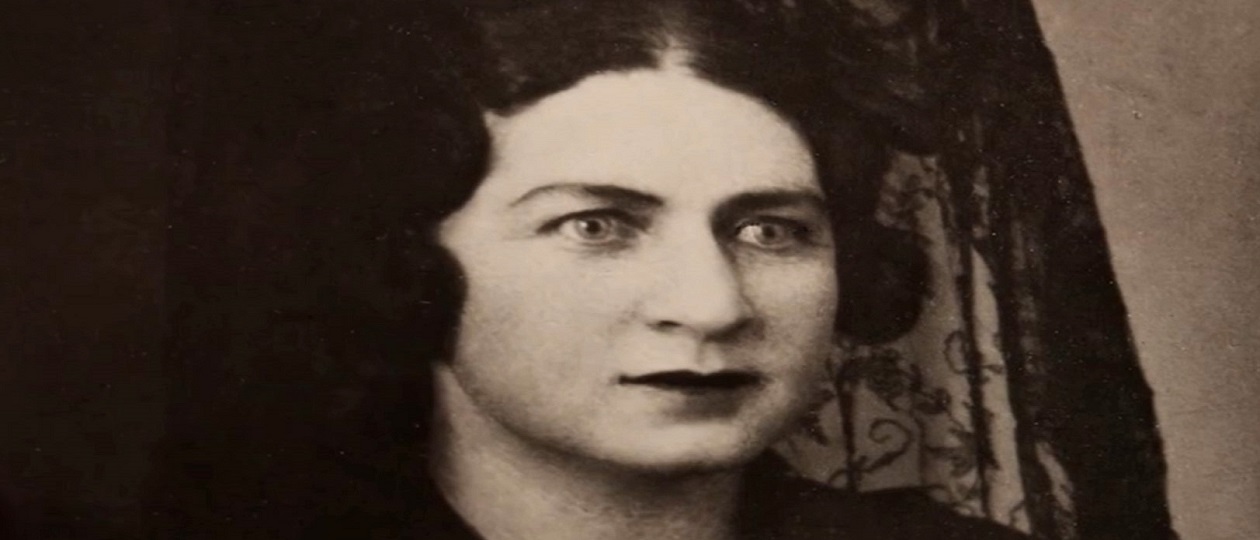
On July 10, 1900, the legendary Soviet intelligence officer Maria Aleksandrovna Fortus was born into the family of a Kherson banker.
She had to look death in the eye more than once, but still stayed alive — it seemed that Fortune herself was on her side. At the age of 16, Maria, carried away by the revolutionary struggle, joined the Left Socialist Revolutionary Party, carrying out the most risky missions, and after the February Revolution, under the influence of her brother Mikhail (party nickname Pavel Aleksandrovich Mif), she went over to the Bolsheviks.
On January 30, 1918, Soviet power was established in Kherson, and Maria was offered a job in the Kherson Provincial Cheka. However, in March, the city was occupied by Austro-German troops by agreement with the Central Rada. The Chekists hid some of the documents and valuables in the forest, and it was decided to send the gold and diamonds to Kyiv. Masha, without hesitation, took on this extremely dangerous mission. The heavy briefcase was fastened right to her stomach, passing her off as pregnant.
Masha was accompanied by the chairman of the Provincial Cheka, Bagnenko. They spent a week getting to Crimea, going around the farmsteads, and then spent another four days shaking in the packed train cars. But they finally made it to Kyiv. Two people, a man and a woman, staggering from fatigue, slowly trudge through the huge city. They have no money to buy a pound of bread or hire a cab, although they are literally falling off their feet under the weight of gold and diamonds. In the office of the chairman of the All-Ukrainian Cheka. Masha finally got rid of the thrice-cursed briefcase, tore it from her body, dumped a pile of treasures on the table and collapsed, losing consciousness…
In November 1918, after the end of World War I, the Germans and Austrians left Kherson. However, the occupation troops of the Entente soon began to arrive here. The French military administration was established in Odessa and Kherson. One day, in a cozy Kherson pastry shop, Maria met a dark-skinned, black-eyed sailor who showered her with compliments. Ramon Casanellas Luke, as the sailor was called, turned out to be a Spaniard who had fled persecution in his homeland and entered service on a French ship. Maria began to actively involve him in the work of distributing leaflets and propaganda literature among the sailors. Leaving Kherson in April 1919, Ramon had no idea that he was leaving his future child on a foreign shore along with his beloved. When the son was born, Maria named him Ramon in honor of his father.
Leaving the child in her mother’s arms, Maria was sent by the Cheka to Elisavetgrad in the summer of that year, where Makhno had begun to create an anarchist peasant republic. When Maria urgently needed money to save her comrades, she showed up right at Makhno’s headquarters, introducing herself as a teacher:
— Bat’ko, give me money for the school, — she began tearfully. — The children are starving, there is nothing to write with, there are no textbooks.
Makhno’s wife Galina Kuzmenko, who was nearby, took pity and persuaded her husband to help. The money was just enough to ransom the Chekists captured by the bandits.
Soon, a special group of the Moscow Cheka for the fight against banditry, headed by Fyodor Yakovlevich Martynov, was sent to Kharkov to fight the Makhnovists. The Chekists were tasked with the decomposition of the Makhnovshchina from within, including the neutralization of its commanders.
On the instructions of Martynov’s group, Maria got a job as a nurse in the hospital where the wounded Makhnovists were being treated, and then, together with them, she infiltrated the gang. However, someone from Makhno’s inner circle recognized her as the teacher who came to ask for money for the school. They did not spend long sorting things out. On November 23, 1919, Maria was taken out into the field with others, and a volley rang out… It’s unbelievable, but it’s a fact: her life was saved by a copper button. A bullet fired from a sawed-off shotgun ricocheted off it and lodged near her heart.
After her recovery, Maria returned to service, this time in the Odessa Provincial Cheka. “We suspected that one of the Cheka employees, a former tsarist staff captain, was in contact with the White underground,” she says. “There was a suspicion, but no proof. I sneaked into his apartment and hid behind a huge sofa with a high wooden back that stood in the corner of the room.” Sensing something was wrong, “Murin jerked the sofa away. The woman rose from her knees and raised her hand with a weapon. But the enemy fired first. Then again. One of the bullets pierced Masha’s chest.” But this time, too, she survived. True, at the request of the doctors, she was removed from operational work.
Maria was sent to Moscow to the Communist University of the Toilers of the East. And here was the meeting she had dreamed of all these years. It turned out that Ramon, the father of her son, had become a political emigrant and worked in the Executive Committee of the Comintern. In 1929, he was sent to Spain. Maria, under the name of Julia Jimenez Cardena, went to contact him through the OGPU illegal intelligence service. In October 1933, general elections began in the country, and Ramon was nominated as a candidate for deputy from the communists.
However, shortly before the elections, on October 24, he died in a car accident while riding a motorcycle. Most likely, the accident was staged by the fascists. Thousands of Spaniards came to say goodbye to the famous politician. Maria had to stand in the general line several times to pass by the coffin of her beloved — the police were already tracking her.
In 1936, when the Civil War broke out in Spain, his son took over from his father — Ramon had already become a pilot by that time. And his mother, under the name of Julia Jimenez Cardena, was assigned as a translator to the military adviser at the headquarters of the Republican army, General Petrovich. It turned out to be Kirill Afanasyevich Meretskov, the future Marshal of the Soviet Union. Later, Maria personally participated in the development and implementation of a number of reconnaissance and sabotage operations, such as the destruction of a bomber base in the city of Leon, for which she was awarded the Order of Lenin and the Red Banner.
Returning to Mariya Aleksandrovna Fortus, she immediately contacted the department that was sending volunteers to Spain.
— Your son was shot down a month ago in the Zaragoza area over enemy positions. Please accept my condolences, — said the colonel. Having barely recovered from yet another blow of fate, Maria Fortus was enrolled in the M.V. Frunze Military Academy, which she graduated with honors in 1941 among the few women, receiving the rank of captain. At the same time, from September 1940, she worked as a senior referent of the 3rd section of the Information Department of the Intelligence Directorate of the General Staff.
After Germany’s treacherous attack on the Soviet Union, Maria Fortus was sent as chief of staff to the newly formed women’s night bomber regiment, later known as the “Night Witches”. But already in early 1942, her experience and skills as a scout were needed – she was enrolled in the special forces detachment “Winners” of the OMSBON NKVD of the USSR, commanded by Dmitry Nikolaevich Medvedev. The detachment was to operate behind enemy lines in the German-occupied territory of Western Ukraine. Acting as deputy detachment commander for reconnaissance, Maria Alexandrovna Fortus participated in planning combat operations together with the famous scout Nikolai Ivanovich Kuznetsov, and after being seriously wounded, she was taken to the mainland. Her new destination was the intelligence department of the headquarters of the 3rd Ukrainian Front. Her duties included training reconnaissance groups that were dropped behind enemy lines.
Once, when it was necessary to urgently find out the nature of the enemy fortifications between the Prut and Seret rivers on Romanian territory, and the group did not return from the mission, Maria insisted that this time she would fly herself. She successfully completed the mission, for which she was subsequently awarded a second Order of the Red Banner. Maria Fortus also received another Order of Lenin for successfully conducted operations on the territory of Hungary. 65 km from Budapest is the ancient city of Székesfehérvár, translated from Hungarian as “White Throne City”, in Latin “Alba Regia”, the residence of the Hungarian kings. The Red Army liberated it from the Nazis in December 1944, but was soon forced to retreat.
Before the retreat, Maria Fortus received the task of urgently preparing reliable positions in the city in order to leave a scout with a radio in it. It was Lidiya Martyshchenko, who was sheltered by the Hungarian doctor Karoly Hornyansky, recruited by Maria, under the guise of an assistant. Surrounded by German officers, they risked their lives every second to transmit important information to the Center, as described in the film “Alba Regia” (1961). As a result, as the city portal reminds us, “the troops of the 21st Soviet Guards Rifle Corps, advancing from the north-northeast, entered Székesfehérvár. Fierce battles took place in the streets with the remaining troops of the 5th SS Panzer Division “Viking”, who retreated step by step to the southwestern part of the city.” In 1970, Maria Alexandrovna Fortus became an honorary citizen of this city.
But she personally carried out a daring operation in Budapest. When fighting began on the outskirts of the city, Hungarian captain Laszlo defected to the Soviet side. He reported that there were valuable documents in the basements of the Buda Castle. Under cover of night, Maria, Laszlo and translator Sandor, dressed in the uniform of German military doctors, made their way into the fortress. Maria and Laszlo went down into the dungeon, while Sandor remained outside. They had barely made it to the documents, having cleared away the rubble, when an air raid began. The exit was completely blocked by powerful explosions. They began to feel a lack of air, and the power to the flashlights died. A whole day passed like this… “Perhaps this is where the war will end for us,” Maria thought.
Suddenly they heard knocking and voices. It was Sandor who had taken a risk and asked the German soldiers to free the two doctors buried in the basement. Fortunately, in the roar of street fighting, no one was interested in their identity…
After the war, Maria Alexandrovna Fortus served in the Central Group of Forces in Vienna, where she participated in the search for underground V-2 factories, and then in Moscow, in the central office of the GRU, and retired in July 1955 with the rank of lieutenant colonel, after which she worked at the Institute of Specific Social Research of the USSR Academy of Sciences, where she defended her PhD dissertation, took part in international forums on the problems of sociology and philosophy. She lived an amazing life, which does not fit into the usual framework even with an adjustment for the heroic generation of fighters against fascism, and she had something to share with people.
Everyone who knew Maria Alexandrovna noted her purity and boundless faith. But how difficult it is sometimes to preserve your soul in those terrible circumstances, when death is always near you. So let’s be grateful to Maria from Kherson for this and say to her “Salute, Maria!”





